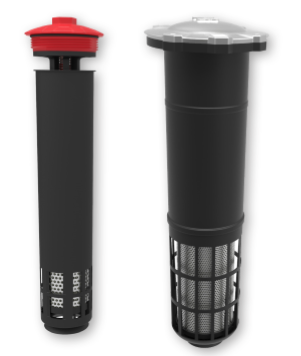Modern mobile machinery requires compact and robust hydraulic components. And according to engineers at ARGO-HYTOS, this also applies to hydraulic tanks, as lack of space and cost pressure often lead to a reduction in tank volume. With a simultaneous increase in performance in the form of higher volume flows, the requirements for return filters are also on the rise. ARGO-HYTOS return filters with AirEX air separation are designed to accelerate the outgassing of air and prevent foaming, despite ever shorter residence times of oil in the tank.

This concept can offer advantages, particularly in mobile equipment that operates with high volume flows, in relation to the tank capacity. The flow direction of the filter element from the inside to the outside reduces the flow velocities of the hydraulic medium. In conjunction with large drain openings of the filter bowl, the filter achieves velocities of less than 0.5 m/sec (1.64 ft/sec). The oil enters the tank over the entire circumference, close to the surface, which favors the outgassing of air.
The AirEX return line filters are available in two different designs to suit user requirements, regardless of the tank design or pipe routing. The popular tank-mounted return filters with head section are optionally available as a top-entry (TE) design with an air separation module at the filter outlet. Among other things, a sophisticated flow guidance system ensures that the air bubbles collide with each other, causing them to coalesce. This significantly increases the buoyancy of the bubbles and thus accelerates air separation. The top-entry design is also available for return filters without a head section for installation in tank chambers.
If, due to the routing of the line, it is advantageous to route the return line at the bottom or laterally into the tank, in-tank return filters in bottom-entry (BE) design are the first choice. The return line is connected to the filter housing internally in the tank. The oil is filtered and then fed into the tank through large openings distributed around the circumference of the filter housing. The outlet flow is, of course, below the oil level and at the lowest possible flow rate. Bottom-entry filters support natural degassing by calming the oil in the tank and by the short distance between the outlet openings and the oil surface.
In product sizes ranging from RFI 206 to RFI 1006, for example, nominal flow rate is 160 to 960 lpm (42 to 254 gpm), maximum operating pressure is 8 bar (116 psi) with a temperature range of -30 to 100° C (-22 to 212° F). The units are suitable for mineral oil and biodegradable fluids. Housing construction materials are reinforced polyamide or aluminum alloy.
ARGO-HYTOS
www.argo-hytos.com

Leave a Reply